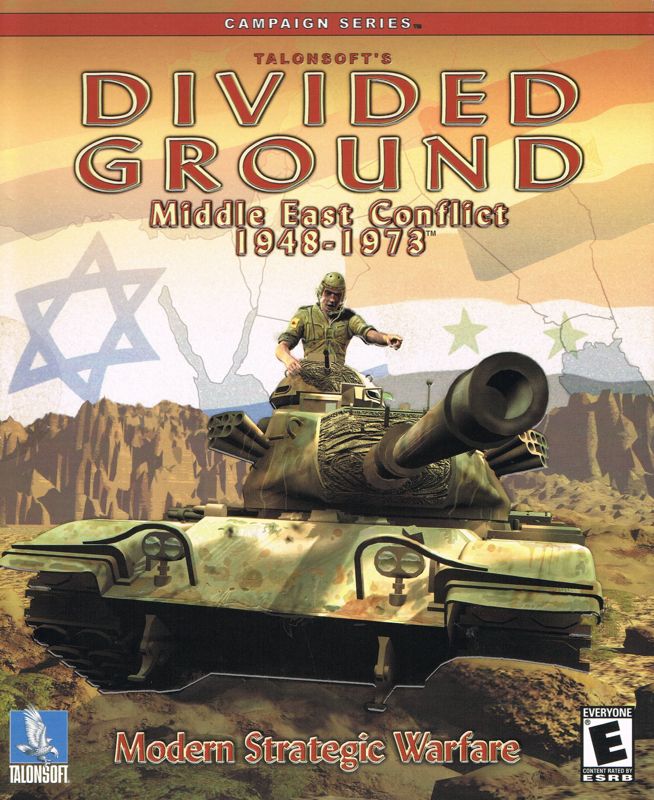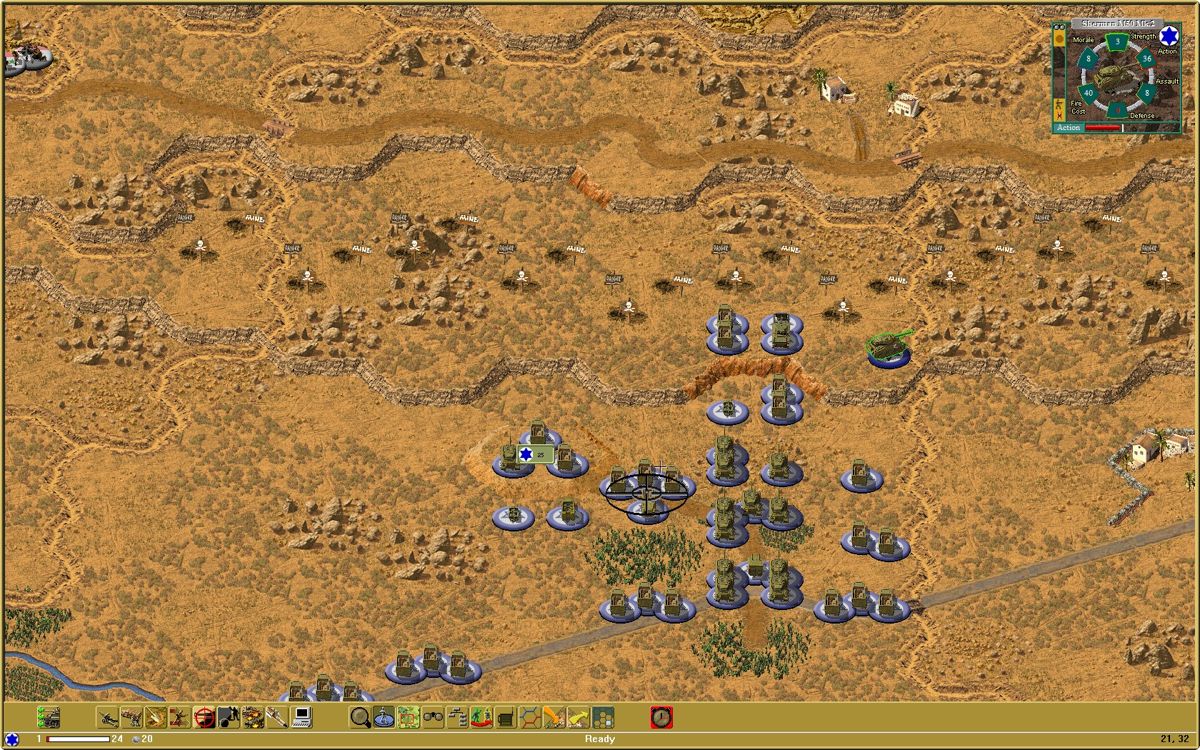Retro Replay Review
Gameplay
Divided Ground: Middle East Conflict 1948-1973 faithfully adopts the hex-based, turn-based system that fans of TalonSoft’s Battleground series will immediately recognize. Each turn represents approximately six minutes of real-time action, compelling you to weigh every decision as you maneuver infantry, armor, and support units across the isometric map. The game’s core mechanics revolve around movement, combat resolution, and the often-overlooked strategic necessity of maintaining supply lines to your forward-deployed forces.
(HEY YOU!! We hope you enjoy! We try not to run ads. So basically, this is a very expensive hobby running this site. Please consider joining us for updates, forums, and more. Network w/ us to make some cash or friends while retro gaming, and you can win some free retro games for posting. Okay, carry on 👍)
With 22 standalone scenarios covering the four major conflicts between Israel and its Arab neighbors from 1948 to 1973, Divided Ground keeps gameplay varied yet historically grounded. You can choose to step into the boots of either side in each battle, whether you’re defending key positions in the 1948 War of Independence or orchestrating rapid armored thrusts during the Six-Day War. Scenarios are grouped into campaigns but remain unlinked, allowing you to jump into any engagement without prior setup or prerequisites.
The user interface leans heavily on menus and statistical screens for issuing orders, monitoring unit status, and tracking supply routes. While this approach demands patience and planning—typical of classic wargames—it rewards those willing to pore over details. Novices might face a steep learning curve, but tooltips and the clear presentation of unit strengths, movement factors, and terrain modifiers help ease the onboarding process.
Graphics
Graphically, Divided Ground embraces a utilitarian aesthetic that prioritizes clarity over flashy effects. The isometric map tiles are richly detailed, with terrain features such as deserts, wadis, and urban ruins rendered in distinct color palettes to aid quick recognition. Unit icons are small but distinct, each carrying a clear symbol denoting type, nationality, and combat readiness.
Animations for combat and movement are minimal—essentially simple transitions and brief combat flashes—but they serve their function of signaling successful attacks, retreats, and unit destruction. For players accustomed to modern 3D renderings, the visuals may seem dated, yet the classic pixel art retains a certain charm and timeless readability that remains effective during long play sessions.
The interface elements—menus, buttons, and statistics panels—are laid out logically, albeit with a style that harks back to late ’90s PC design. Colors and fonts maintain high contrast for readability, and while customization options are limited, the overall presentation strikes a good balance between providing necessary information and avoiding visual clutter.
Story
Divided Ground is not a narrative-driven title in the traditional sense; instead, it offers a series of focused, historically based scenarios that immerse you in the strategic challenges faced by both Israeli and Arab commanders. Pre-battle briefings provide concise context, outlining objectives, force compositions, and relevant historical notes—setting the stage without overwhelming with extraneous detail.
Each scenario hones in on pivotal moments, from the desperate defense of Jerusalem in 1948 to the lightning campaigns across the Golan Heights in 1967 and the tense attrition warfare of 1973. The scenarios are self-contained, meaning you don’t carry over unit experience or resources from one to the next, but this design encourages you to approach each conflict afresh and experiment with different tactics.
For history enthusiasts, Divided Ground’s greatest strength lies in its balanced portrayal of both sides. You’ll appreciate the authenticity of unit rosters—ranging from early Sherman tanks to iconic T-55s and APCs—as well as the emphasis on logistical considerations like supply corridors that genuinely affected the outcomes of these mid-century wars.
Overall Experience
Playing Divided Ground: Middle East Conflict 1948-1973 feels like delving into a digital wargaming board partnered with the detailed manuals of yesteryear. The deliberate pacing, deep emphasis on strategy, and historical fidelity make it a rewarding experience for dedicated wargamers and history buffs. While it may not cater to those seeking instant gratification or high-octane visuals, its richness in tactical depth ensures long-term engagement.
The variety of scenarios provides excellent replay value: you can test defensive doctrines in one mission, then switch to rapid offenses in the next, always mindful of terrain, supply routes, and unit cohesion. Multiplayer options—hotseat or PBEM—add another layer of challenge as you face off against human opponents who can exploit the same supply-based vulnerabilities you’ve learned to guard against.
Ultimately, Divided Ground stands as a solid entry in TalonSoft’s catalog, offering an informative and engaging wargaming experience. It rewards careful planning and historical curiosity, making it a worthwhile purchase for those intrigued by the Arab–Israeli conflicts and eager to explore them through a classic, hex-and-turn strategic lens.
 Retro Replay Retro Replay gaming reviews, news, emulation, geek stuff and more!
Retro Replay Retro Replay gaming reviews, news, emulation, geek stuff and more!









Reviews
There are no reviews yet.